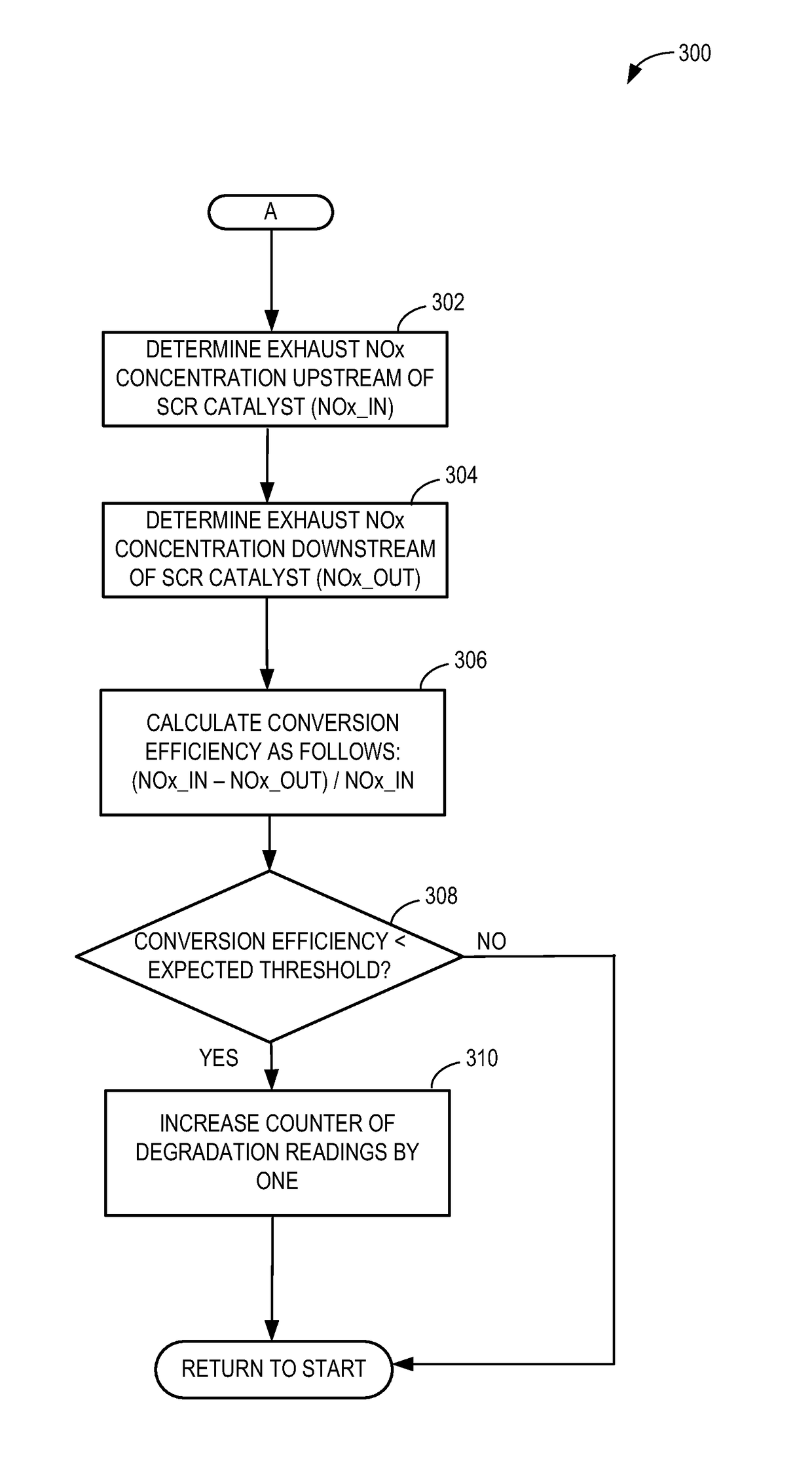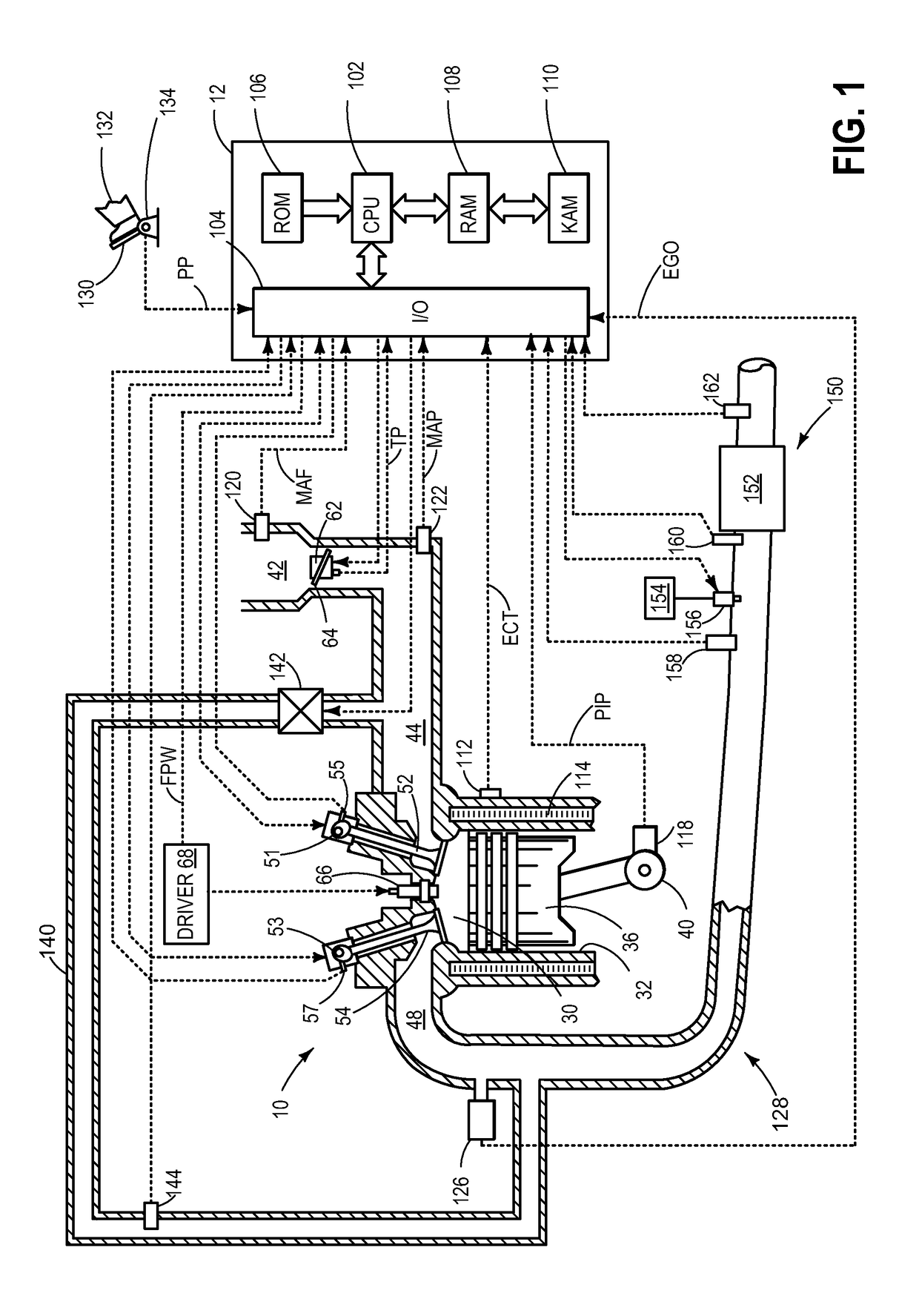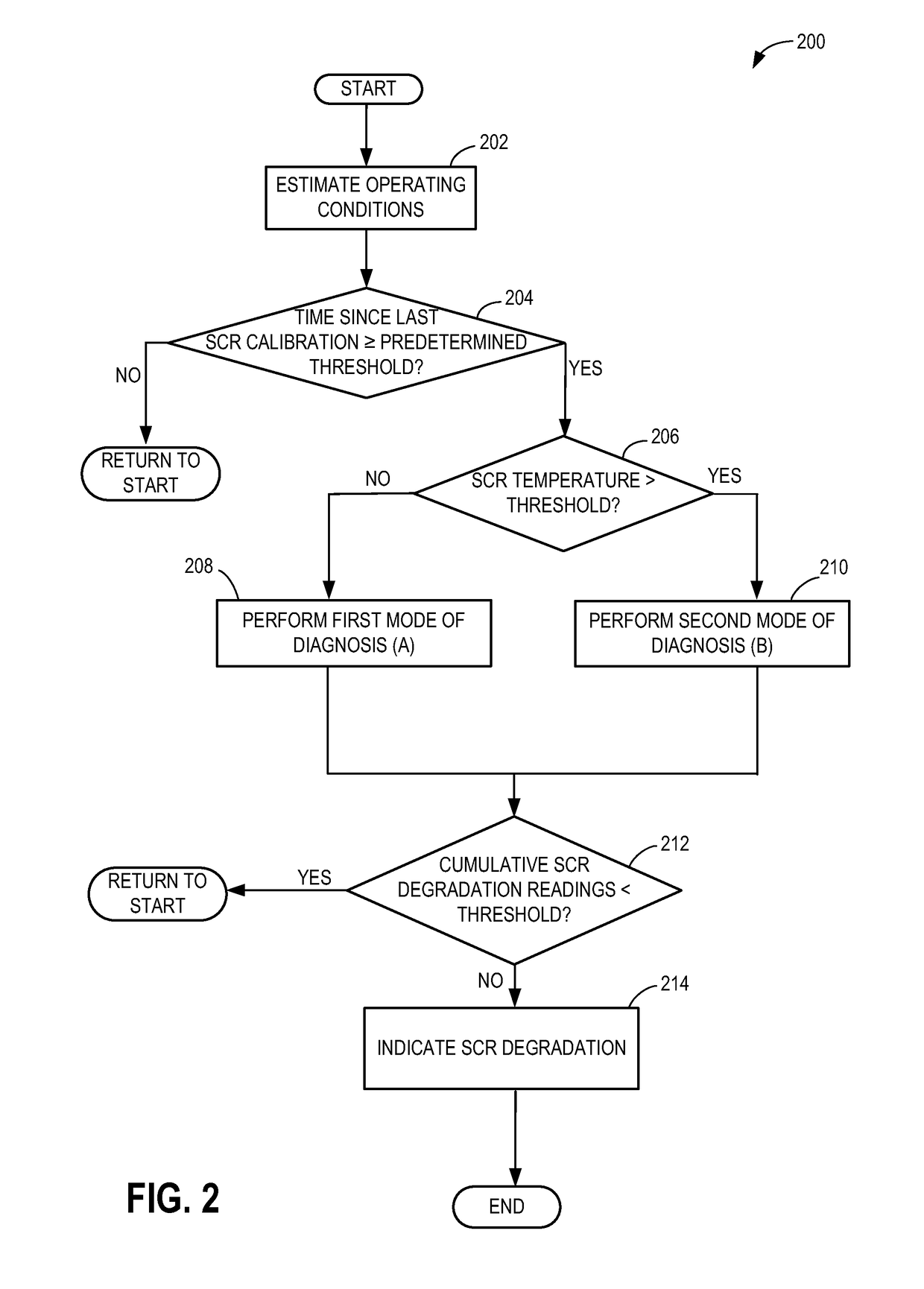Method to diagnose SCR catalyst
a catalyst and catalyst technology, applied in the direction of machines/engines, electrical control, exhaust treatment electric control, etc., can solve the problems of reducing relying on stationary testing can be detrimental, and affecting the emissions of moving vehicles, so as to reduce the level of nox, reduce the release of exhaust emissions, and reduce the effect of nox
- Summary
- Abstract
- Description
- Claims
- Application Information
AI Technical Summary
Benefits of technology
Problems solved by technology
Method used
Image
Examples
Embodiment Construction
[0016]The following description relates to methods and systems for detecting SCR degradation in the exhaust system of an engine, such as that shown in FIG. 1. A controller of the engine may be configured to perform a routine, such as the example routine of FIG. 2, to select a mode of SCR diagnosis based on a temperature of the catalyst. FIGS. 3 and 4 show two different modes and the routines that a controller may perform in each mode based on the temperature of the SCR catalyst and feedgas NOx levels in the exhaust. When SCR catalyst is operating is within its peak conversion range (FIG. 5), NOx levels in exhaust gases exiting the engine may be artificially enhanced and the necessary increase may depend on the original levels of NOx in exhaust gases (FIG. 6). Artificially increasing feedgas NOx levels to the SCR catalyst can help improve the accuracy of NOx sensor readings during selected conditions. By incorporating conversion efficiency results obtained over a range of SCR operati...
PUM
 Login to View More
Login to View More Abstract
Description
Claims
Application Information
 Login to View More
Login to View More - R&D
- Intellectual Property
- Life Sciences
- Materials
- Tech Scout
- Unparalleled Data Quality
- Higher Quality Content
- 60% Fewer Hallucinations
Browse by: Latest US Patents, China's latest patents, Technical Efficacy Thesaurus, Application Domain, Technology Topic, Popular Technical Reports.
© 2025 PatSnap. All rights reserved.Legal|Privacy policy|Modern Slavery Act Transparency Statement|Sitemap|About US| Contact US: help@patsnap.com



